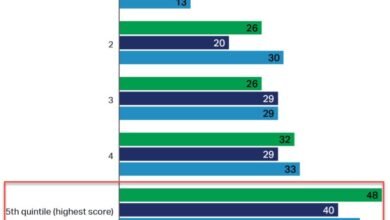Finding Your Type: Fonts And Their Influence On Learning
Typeface and fonts have a subtle but powerful impact on how online learners react to, view, interact with, and learn online content. Yet fonts have been overlooked as elements of online learning design. Read on as Mary Burns explores the power of the mighty little font in eLearning courses

Source | elearningindustry.com | Mary Burns
How Fonts Influence Learning And How To Find Your Type
Do you have a favorite font? How about fonts you hate (Times New Roman, anyone)? Do you ever leave a webpage because you don’t like the fonts? (An estimated 75% of web users do!) Do you find yourself playing around with fonts to get the right look and feel for an online product…?
We may not give them a lot of thought, but the modest little font is a powerful part of online learning and the overall online experience. In this article, we discuss the power of fonts in online learning. But first, a quick overview of Fonts and Typeface 101.
A Font By Any Other Name…
Figure 1: A few of the fonts in MS Word
In fact, what we call “fonts” are actually “typeface.” For example, if you look at Figure 1, a normal list of “fonts” in Microsoft Word, what you see in fact is typeface (Abadi MT, Arial, etc.). In our Digital Age, we now use “typeface” and “font” interchangeably. But they are actually different.
Two analogies may help in understanding the difference. A “typeface” is like a song. The font is like an MP3. In other words, the typeface is the creation. The font is the delivery mechanism (Sherman, cited in Vartanian, 2010). Alternatively—the font is what you use; the typeface is what you see (Florendo, cited in Vartanian, 2010).
There are tons of typeface. Let’s take Helvetica, the world’s most common typeface (and the subject of its own movie!). Helvetica 10 is a font. Helvetica 11 is another font. Helvetica 12 is yet another font. Helvetica bold is another font. I think you’re getting the idea…
So, essentially “fonts” are collections of all the characters of a typeface (the specific letterform design of an alphabet), including capital and lowercase letters, numerals and punctuation marks (BBC News, 2010). Going back to Figure 1, if you were to click on the arrow to the right of the typeface names in that image, you’d see the various fonts associated with that typeface (normal, bold, italic, oblique).
As you may know, if you have taken calligraphy, typography, or graphic design course, each typeface has a specific structure. To understand parts of the typeface, go here.
There are two broad classifications of typeface—serif and sans serif fonts. Figure 2 explains the difference and shows the subtle differences among each.






